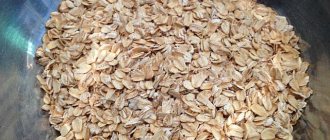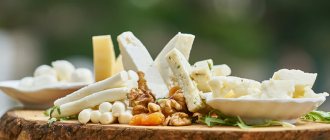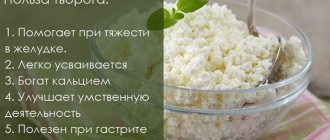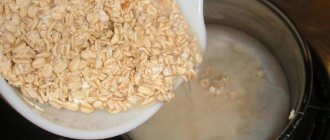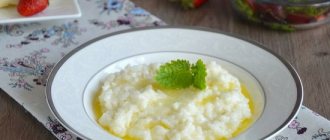What determines the fat and protein content in cow's milk?
Cow's milk is a natural storehouse of nutrients and microelements. It is rich in proteins, fats, lactose, vitamins, healthy salts, enzymes and many other essential elements. On average, whole milk from cows contains: proteins - 3.2%, fats - 3.8%, lactose - 4.8%, useful macro- and microelements - about 1%, which in total amounts to about 13% of dry matter. The digestibility of protein, fat and lactose by the human body varies from 95% to 98% depending on the composition.
The nutritional value of dairy products and the cost of milk when selling it for processing directly depend on the quantity and quality of components contained in milk. Undoubtedly, by increasing the level of protein and fat in this product, the agricultural producer is guaranteed to increase the profitability of dairy production.
In our time, the increased protein content in whole milk is of particular value. Thus, in countries with highly developed dairy farming, up to 60% of the cost of milk produced depends on the level of protein content in it.
The protein content of cow's milk varies from 2.8% to 3.6%. There is a direct dependence of the level of fat in milk on the percentage of protein content in it, that is, the higher the protein saturation, the fattier the milk.
Dairy products, Proteins, fats, carbohydrates, calories, digestion time
Product composition tables → Dairy products → Proteins, fats, carbohydrates, calories, digestion time
Because
For " Dairy products, Protein, fat, carbohydrates, calories, digestion time
" other sources were used, more accurate data on the products of the table and other products - see the
recipe composition analyzer
(enter the name of the product and weight).
Show:
all
| squirrels | fats | carbohydrates | calories
| product (click link for details) | proteins, g | fats, g | carbohydrates, g | calories, kcal | digestion, hour |
| Goat milk (raw) | 3 | 4.2 | 4.5 | 68 | 1.4 |
| Cow's milk (raw) | 3.2 | 3.6 | 4.8 | 64 | 1.3 |
| Cow's milk (sterilized) | 2.9 | 4.7 | 4.7 | 61 | 2 |
| Cow's milk (paste) | 2.8 | 3.2 | 4.7 | 58 | 2 |
| Skim milk | 2 | 0.05 | 4.8 | 31 | 1.5 |
| Baked milk | 3 | 6 | 4.7 | 84 | 2 |
| Condensed milk (with sugar) | 7.2 | 8.5 | 56 | 320 | 4 |
| Cocoa with condensed milk | 8.2 | 7.5 | 54.9 | 309 | 4 |
| Coffee with condensed milk | 8.4 | 8.6 | 53 | 312 | 4 |
| Condensed milk (sterilized) | 7 | 8.3 | 9.5 | 140 | 3 |
| Whole milk powder | 26 | 25 | 37.5 | 476 | 2.3 |
| Cream 10% fat | 3 | 10 | 4 | 118 | 2.3 |
| Cream 20% fat | 2.8 | 20 | 3.7 | 206 | 2.4 |
| Cream 35% fat | 2.5 | 35 | 3 | 337 | 3 |
| Whipped fruit cream | 2.8 | 27 | 23.6 | 344 | 2.4 |
| Whipped cream with chocolate | 2.8 | 27 | 21.6 | 337 | 3 |
| Condensed cream with sugar | 8 | 19 | 47 | 382 | 4 |
| Dry cream | 23 | 42.7 | 26.3 | 579 | 2.4 |
| Dry high-fat cream | 10 | 75 | 10 | 753 | 3 |
| Sour cream 10% fat | 3 | 10 | 2.9 | 115 | 2.3 |
| Sour cream 20% fat | 2.8 | 20 | 3.2 | 206 | 2.4 |
| Sour cream 30% fat | 2.4 | 30 | 3.1 | 294 | 2.5 |
| Sour cream 40% fat | 2.4 | 40 | 2.6 | 381 | 3 |
| Low-fat cottage cheese | 18 | 0.6 | 1.8 | 88 | 2.4 |
| Cottage cheese semi-fat | 16.7 | 9 | 2 | 159 | 2.5 |
| Fat cottage cheese | 14 | 18 | 2.8 | 232 | 2.5 |
| Soft dietary cottage cheese | 16 | 11 | 1 | 170 | 2.4 |
| Sweet curd mass | 11.3 | 20 | 15.4 | 286 | 2.5 |
| Curd cheese mass | 7.1 | 23 | 27.5 | 341 | 2.5 |
| Children's curd cheeses | 9.1 | 23 | 18.5 | 315 | 2.4 |
| Glazed cheese curds | 8.5 | 27.8 | 32 | 407 | 3 |
| Sweet acidophilus paste | 6.6 | 8 | 25.5 | 198 | 2.5 |
| Low-fat acidophilus paste | 5.5 | 0.2 | 12.5 | 74 | 2.4 |
| Acidophilus | 2.8 | 3.2 | 3.8 | 57 | 2 |
| Yogurt | 5 | 3.2 | 3.8 | 66 | 2 |
| Sweet yoghurt | 5 | 3.2 | 8.5 | 85 | 2.2 |
| Full fat kefir | 2.8 | 3.2 | 4.1 | 56 | 2 |
| Low-fat kefir | 3 | 0.05 | 3.8 | 30 | 1.4 |
| Kumis from mare's milk | 2.05 | 1 | 5 | 48 | 2 |
| Kumis from cow's milk | 3 | 0.05 | 6.3 | 40 | 2 |
| Pasteurized buttermilk | 3.3 | 1 | 4.7 | 40 | 2.1 |
| Fermented buttermilk | 3.3 | 1 | 3.8 | 39 | 1.5 |
| Curdled milk | 2.8 | 3.2 | 4.1 | 58 | 1.4 |
| Yogurt Mechnikovskaya | 2.8 | 6 | 4 | 83 | 1.5 |
| Ryazhenka 6% fat | 3 | 6 | 4.1 | 84 | 2 |
| Curd whey | 0.8 | 0.2 | 3.5 | 20 | 1.3 |
| Cheese whey | 1 | 0.1 | 4 | 21 | 1.3 |
| Cow's milk cheese | 17.9 | 20.1 | 260 | 3 | |
| Sheep's milk cheese | 14.6 | 25.5 | 298 | 3 | |
| Cheese "Vyrussky" | 29 | 15 | 258 | 3.2 | |
| Cheese "Dutch" | 26 | 26.8 | 352 | 3.2 | |
| Cheese "Poshekhonsky" | 26 | 26.5 | 350 | 3.2 | |
| Cheese "Pribaltiyskiy" | 30 | 9 | 209 | 3.2 | |
| Cheese "Russian" | 23 | 29 | 360 | 3.2 | |
| Cheese "Roquefort" | 20 | 28 | 337 | 3.4 | |
| Processed cheese "Russian" | 22 | 27 | 340 | 3.2 | |
| Smoked sausage cheese | 23 | 19 | 271 | 3.4 | |
| Milk ice cream | 3.2 | 3.5 | 21.3 | 126 | 2.3 |
| Ice cream | 3.3 | 10 | 19.8 | 179 | 2.3 |
| Cream | 3.2 | 15 | 20.8 | 227 | 2.4 |
| Eskimo | 3.5 | 20 | 19.6 | 270 | 2.4 |
| Milk chocolate | 4.2 | 3.5 | 23 | 138 | 2.3 |
| Creamy chocolate | 3.5 | 10 | 21.5 | 188 | 2.4 |
| Chocolate ice cream | 3.6 | 15 | 22.3 | 236 | 2.4 |
| Milk creme brulee | 3.5 | 3.5 | 23.1 | 134 | 2.3 |
| Creamy creme brulee | 3.5 | 10 | 21.6 | 186 | 2.4 |
| Creme brulee ice cream | 3 | 15 | 23 | 235 | 2.4 |
| Milk nut | 5.4 | 6.5 | 20.1 | 157 | 2.4 |
| Creamy nut | 5.5 | 13 | 18.6 | 210 | 2.5 |
| Nut ice cream | 5.2 | 18 | 19.9 | 259 | 2.5 |
| Milk strawberry | 3.8 | 2.8 | 22.2 | 123 | 2.3 |
| Creamy strawberry | 3.8 | 8 | 20.9 | 165 | 2.3 |
Show:
all
| squirrels | fats | carbohydrates | calories
Because for « Dairy products, Proteins, fats, carbohydrates, calories, digestion time
» other sources were used, more accurate data on products, tables and other products - look in
the recipe composition analyzer
(enter product name and weight).
Which cows have the highest protein and fat content in milk?
The global gene pool of dairy cattle is about 1000 breeds. The fat content of milk from a black-and-white cow (3.6%) that is customary for domestic agricultural producers is by no means a standard. The level of fat in the milk of some cow breeds can reach 6.8% and even 8%, which is similar in fat content to cream.
Owners of Jersey and Ayrshire breeds are especially proud of the quality and fat content of their pets' milk.
The Jersey breed has very ancient roots. Its name is associated with the place of breeding - the island of Jersey, located in the Bay of Saint-Malo of the English Channel. Despite the fact that there is no exact information about the origin of the breed, there is a hypothesis that the breed was developed by mixing the blood of cows from Brittany and Normandy.
The mild maritime climate and the diversity of pastures available throughout the year led to the development of dairy farming on the island of Jersey. To preserve the genetic purity of the breed, in 1789 the island authorities introduced a ban on the import of cattle of other breeds, and already at the beginning of the 19th century the breed began to be actively exported to the USA, European countries (including Russia), Australia, and the islands of New Zealand and to the African colonies.
The breed has a unique color in its own way - the body of the animal is covered with red or light brown hair. The belly and limbs of the cow are often covered in white spots. Sometimes the suit has dark shades. The cow's nose is dark brown, and the hooves and tips of the horns are also dark.
Jersey cows, although small in size (height at the withers is about 120 cm), have a proportional build. Live weight varies depending on the breeding location. Thus, the largest cows are found in the USA and Denmark, where the weight of calves at birth ranges from 18 to 22 kg, while most cows weigh from 400 to 450 kg, and bulls from 600 to 730 kg. However, it is in these countries that the weight of individual cows ranges from 500 to 520 kg, and the weight of bulls even reaches 800 kg.
The breed is characterized by high early maturity and productive milk yield. However, its distinctive feature is the consistently high protein content and excellent fat content of the milk. As noted by the German Cattle Breeders' Association, the average milk yield of 2,190 cows at the age of 5.3 years was 4,504 kg. The average protein content in cows' milk is 4.13%, and fat content is 6.19%. Similar measurements were made in Denmark. There, the average milk yield was 4453 kg, and the milk fat content was noted at 6.14%. Particularly productive individuals give milk yield from 8.5 to 10.2 thousand kg, and the fat content in their milk ranges from 7.0 to 7.4%
The highest productivity potential of Jersey cows can be revealed only with excellent management and a balanced feeding ration. Unfortunately, it is not recommended to breed this breed in genetic purity in its native country. The fact is that it is impossible to create unique and native natural conditions for the breed on the island of Normandy in our latitudes. Therefore, for the natural and climatic conditions of our country, the most acceptable option remains the selection of the Jersey breed with other dairy cows.
Thus, domestic and foreign studies suggest that crossing the Black-and-White and Jersey breeds gives good results. The results of selection are more impressive in size, in contrast to the Jersey breed, and the protein content in the milk of cows and its fat content increases in relation to the Black-and-White breed. At the same time, raising such half-breds for dairy production in Russia is becoming highly profitable due to the fact that the cost of their feed is significantly lower than that of feed for purebred Jersey cows.
Is there any harm from milk?
Recently, many scientists have been discussing more precisely the harm to the human body from milk.
- Allergic reactions are a common occurrence that can be found in 15% of residents. This manifests itself in the fact that after consumption a person experiences diarrhea and severe bloating. A protein allergy may have the same symptoms.
- It is difficult to call this product dietary in its original form, because whole milk is a source of fat. Nutritionists allow low-fat water, but in this case, opt for ordinary clean water.
Interesting! Allergies to milk depend on the nation. For example, in Europe, intolerance can actually be found in 2-5% of the population, and in Africa and Asia this figure grows to 50-75%.
Vegans and raw foodists talk about other harmful properties of this drink:
- increased stomach acidity;
- increases the risk of uterine cancer, but reduces the same intestinal disease, which is much more common;
- Casein is one of the strongest allergens, so all people prone to this disease should consult a doctor before consuming it.
Milk has long been considered one of the fundamental products in the food system. Its benefits and harms depend on a number of conditions, such as the human factor, methods of processing raw materials, etc. You should approach the use of this drink based on the individual characteristics of the body.
Why is it necessary to monitor the fat and protein content of cows' milk?
Milk producers have at their disposal an effective tool for monitoring the level of balance in the diet of cows - control milking. However, these very valuable statistics often remain unclaimed. At the same time, analysis of the accumulated results of control milkings allows us to draw correct conclusions about the quality of the feed supplied based on fat content, protein and urea content, as well as increase future productivity.
Undoubtedly, the nutritional value of milk, among other things, is most significantly influenced by the quality of feed and the conditions of keeping dairy cows. It is especially important to ensure a stable and healthy microenvironment of the animal's digestive tract and udder.
Failure to maintain a balanced feeding diet and the desire to thoughtlessly increase productivity can lead to the development of pathologies such as ketosis, acidosis, persistent metabolic disorders, etc. One should not make hasty conclusions that cows of valuable dairy breeds, unlike breeds with low productivity, are more often susceptible to diseases. This is not true, since the productivity inherent in selection primarily depends on a reasonable balance of nutrients in the feed and routine analysis of milk quality.
The volume of milk yield, the protein content in cow's milk, fat content and urea indicators are the data, the analysis of which will allow us to assess the level of feed management and identify its errors. But, as noted earlier, agricultural producers often do not take this data into account and its value remains unclaimed. At the same time, analysis of control milk yields will significantly increase productivity if the following basic principles are observed:
- Control milking is a fait accompli, documented in a photograph, a note in a magazine or in an electronic database. And this is always a reflection of the specific milking time. Consequently, we can determine the sufficiency and nutritional value of a cow’s diet based on a clearly defined period of time. Statistical (preferably weekly) data on significant events in the feeding process will help us with this. These are the composition of feed and grazing time, the volume of concentrates added during feeding, etc. The collection and consolidation of this data can be ensured by using software products created specifically to automate the farm management process.
- The most effective analysis is during lactation or assessing data by year.
- The analysis should be carried out by productivity groups or in the context of the entire dairy herd, noting information for the following periods of lactation: the first 100 days; next 100 days; over 200 days. Comparing information about the performance of individual animals is impractical, since the protein content in cows’ milk, as well as its fat content, is always different.
- Attention should be paid to natural variations in milk production and milk quality. Thus, in the initial period of lactation, the protein content in cows’ milk and its fat content decrease (the period of colostrum excretion), then these indicators increase again. Therefore, you should not take into account data on the quality of milk in the initial 10 days of the lactation period.
How many calories are in different servings:
595
61
0.61
| Qty | A portion | Calories | In the counter |
| 1 liter = 976g | 595 | ||
| 100 g | 61 | ||
| 1 g | 0.61 | ||
| 149 | 1 cup = 244.33g | 149 | |
| 19 | 1 fl oz = 30.5g | 19 | |
| 9 | 1 tablespoon = 15g | 9 | |
| 3 | 1 teaspoon = 5g | 3 | |
| 146 | 1 glass = 240g | 146 | |
| 63 | 100 ml. = 103g | 63 |
What does the level of fat and protein content in cows' milk indicate?
Milk fat content
Based on the level of fat content in milk, one can judge the structure of the feed. The fact is that fat in milk is formed with the help of acetic acid. It is synthesized in the rumen from fiber contained in feed. Thus, the fat content of milk directly depends on the quality of straw and hay. You can control the level of fat by monitoring the consistency of feed, its consumption for food, as well as the proportions of the supplied concentrate in relation to roughage and fiber-rich feed.
Based on the fat content of milk in the first weeks of lactation, you can determine the caloric content of the diet. As a rule, in the first month of lactation, the fat content of milk decreases significantly. The second decrease in fat levels occurs closer to the 10th week of lactation. Then the fat content gradually increases until the cow is released, that is, the animal’s fat reserves are compensated.
The graph shows: milk yield productivity, protein content in cows’ milk and its fat content in different weeks of the lactation period:
A high fat content (more than 5%) in the first six months and a month after calving indicates that the cow’s body begins to intensively attract its own accumulated fat. Often at this time, the protein content in cows' milk decreases and becomes less than 3.1%. This is usually a warning to the farmer that the cow may be in ketosis. Adult cows, whose metabolism is more active, are especially susceptible to this disease.
However, observations show that such an unfavorable development of events is also possible in those cows that were intensively fed during the previous lactation, as well as during the dry period. As a rule, despite the low feed consumption, the productivity of such animals increases sharply in the first weeks of lactation. The apogee of such diseases usually occurs between the 3rd and 5th week of lactation.
Low fat content may signal the development of acidosis. This is often a consequence of an unbalanced diet. Either at the beginning of lactation, concentrates predominated in the feed, or the feed itself was not enough. A significant decrease in the level of milk fat (by more than 0.4%) occurring in the period between two control milkings, as well as a decrease in the fat to protein ratio (below 1.0 cu) can serve as a warning to the farmer about probable acidosis.
If there is a decrease in milk fat content by 0.2–0.5% for the entire herd, this may indicate high humidity coupled with an increase in temperature in the barn above +27 °C. We should not forget that a decrease in the fat content of milk can be a consequence of the development of liver diseases, hooves, metabolic disorders, diarrhea and the presence of parasites.
Low fat
It is obtained by separating milk from cream. Then they add a little fat and sell it. Of course, this is beneficial to manufacturers. This milk drink can be increasingly seen in our stores. But there is a controversial opinion regarding its use. Previously, such liquid (common name: skim milk) was used only as feed for livestock.
The fact is that to digest this type of dairy product, our digestive system uses reserve reserves of vitamins D and E. Some nutritionists believe, on the contrary, that this type of drink is the most useful, since it has a minimal amount of fat, and there is enough protein for normal nutrition .
Low-fat contains the following indicators of the main components per 100 ml:
- Calorie-31
- Protein-2
- Fat-0.5
- Carbohydrates-4.8
How to increase the protein content in cow's milk
There are several recipes for increasing the amount of protein in milk:
- increasing the volume of feed;
- variety of diet;
- proper quality of feed;
- energy intensity of the diet;
- a reasonable balance of vitamins, salts, fiber and protein.
The volume of feed should be increased from the beginning of the lactation period in order to eliminate the lack of energy in the animal. At this time, the cow, which is highly productive, spends over 300 g of protein from the accumulated resources of the body. Adequate energy restores the cow's body weight, which helps stabilize milk protein levels within normal limits. The increased volume of feed will increase the protein content in cows' milk by 0.3% of the norm.
A varied diet ensures the most effective synthesis of milk components by maintaining a reasonable balance between feed containing coarse and juicy fibers and concentrates. Concentrates are responsible for delivering pectin, starch and sugar to the cow’s body. The share of these easily digestible carbohydrates ranges from 20 to 45% of the total dry matter mass. The highest value is inherent in a diet in which 40% of feed contains fiber, and concentrates - 60%. The lack of grain in the diet is accompanied by a lack of easily digestible carbohydrates.
The quality of concentrates and a balanced diet increases the fat content and protein level in milk. At the same time, excess feeding reduces the fat content of milk by 0.1% or more of the norm, and increases the normative level of protein by 0.2–0.3%.
It has a very significant effect on the quality of milk and the quality of grain mass. It is known that corn flakes increase the proportion of protein in milk, and oat flakes reduce its level by 0.2% of the norm. High-quality grain mass obtained by steaming, pressing, granulating or crushing helps to increase the proportion of protein in milk. At the same time, overfeeding with processed grain leads to a sharp drop in milk fat content and increases the risk of acidosis. To minimize the threat, it is necessary to dilute the grain fraction with molasses, beets, bran, etc.
To maintain the quality of milk in terms of protein, it is necessary to ensure a reasonable protein balance (digestible and crude protein). Attention should also be paid to the depth of protein breakdown in the rumen, which depends on the composition of the feed. Increasing the proportion of crude protein in them increases productivity, but does not have any effect on the protein level in milk. At the same time, its deficiency leads to a sharp decrease in protein levels.
It is known for certain that when the proportion of crude protein in feed is reduced from 17 to 9%, with each reduced percentage the protein level in milk decreases by 0.02% of the norm.
Composition of cow's milk
The concentration of bioactive substances in cow's milk is determined by the breed of cattle, age, physical condition, previous diseases, quality of care and nutrition. The basis of the product is water, lactose, protein, milk fat, a complex of vitamins and minerals.
Vitamins and elements
The vitamin complex contained in this valuable product ensures the full functioning of the body, cellular growth and tissue development.
Expert opinion
Zarechny Maxim Valerievich
Agronomist with 12 years of experience. Our best country expert.
Ask a Question
Vitamins help absorb nutrients, and the mineral complex maintains the healthy structure of bone tissue and tooth enamel, the normal functioning of skeletal muscles and heart muscle.
The table shows the amount of beneficial substances contained in milk in mg per 100 grams.
| Vitamins | ||
| thiamine (B1) | participates in the synthesis of digestive juices, helps in the absorption of nutrients | 0,11 |
| riboflavin (B2) | stimulates metabolism, accelerates energy production | 0,45 |
| Niacin (B3) | supports the full functioning of the nervous system and digestive tract | 0,26 |
| pantothenic acid (B5) | influences metabolic processes, participates in the formation of red blood cells | 0,88 |
| pyridoxine (B6) | participates in fermentation reactions, accelerates the absorption of amino acids | 0,09 |
| folic acid (B9) | has a positive effect on the functional state of the nervous system | 0,5 |
| cyanocobalamin (B12) | accelerates DNA synthesis, necessary for the formation of red blood cells | 1,07 |
| ascorbic acid (C) | has an antioxidant effect, stimulates protein metabolism, participates in the synthesis of collagen and carnitine | 0,5 |
| retinol (A) | strengthens the immune system, has a positive effect on the functioning of the visual organs | 0,07 |
| calciferol (D) | prevents rickets and osteoporosis, helps calcium to be absorbed in the body | 0,1 |
| tocopherol (E) | supports the functional state of internal organs, has a powerful antioxidant effect, extinguishes inflammatory processes | 0,15 |
| phylloquinone (K) | necessary for protein synthesis and blood clotting processes, supports metabolism in bone tissue | 0,0005 |
| mineral elements | ||
| calcium | structural element of skeletal and dental tissues | 123 |
| phosphorus | participates in the construction of bone tissue | 95 |
| magnesium | ensures the occurrence of many enzymatic processes | 12 |
| potassium | supports the functioning of the nervous system and muscle contractility | 0,15 |
See also
The benefits and harms of real cow's milk, calorie content and chemical compositionRead
Cow's milk also contains copper, sodium, manganese and iron, but the percentage of these trace elements is insignificant.
Lactose
Milk sugar determines the pleasant sweetness in the taste of milk. But for many people, lactose is an allergen, which makes drinking whole cow's milk impossible. Lactose is the first and only carbohydrate that a calf consumes in the first weeks of life.
No other non-dairy product contains this sugar, so it is extremely important that young animals receive maternal product to strengthen the immune system.
In the human digestive tract, lactose is broken down almost 100% thanks to the enzyme lactase, without which drinking milk would cause poisoning in an adult. The average caloric value of lactose is 3.8 kcal per 1 g. This is less than sucrose.
Characteristics of the action of lactose in the human body:
- sugar, once in the digestive tract, is slowly broken down;
- the bacterial microflora of the colon synthesizes lactic acid;
- Lactic acid is a preservative that prevents rotting.
Milk fat
If you look under a microscope, you will notice that the surface of the milk consists of tiny fat droplets - this is milk fat. When milk sits at room temperature, droplets rush from the thickness of the liquid to the surface, this is how cream is formed, by the thickness of which farmers roughly determine the fat content of the product.
When exposed to temperature and whipping the oil, fat droplets merge into larger structures.
Milk fat contains more than 20 fatty acids, which give the product a mild taste. Calorie content – 9 kcal per 1 g, digestibility – almost 100%. Fat is sensitive to ultraviolet radiation, high temperatures, and high humidity - under the influence of these factors it imparts bitterness to the taste of milk.
Dairy products contain cholesterol, and its amount increases according to the increase in milk fat content:
- The 1% product contains 3.2 mg;
- 2% – 10 mg;
- 3% – 15 mg.
The highest amount of cholesterol for an adult with a healthy vascular system is 500 mg per day, the permissible daily portion of 2% milk is as many as 5 cups. But if you are prone to atherosclerosis, you should not drink more than 3 cups of cow's milk per day.
Protein
The percentage of protein in milk is an indicator of the quality of nutrition and metabolic rate of the cow. When protein and carbohydrates are contained in large quantities and provide the body with sufficient energy, then we are talking about an energy boost in the herd.
1 liter of natural product contains 33 g of protein, consisting of two compounds:
- Casein is a tasteless and odorless calcium salt. It looks like white crystals and is capable of coagulation, making it possible to obtain solid and liquid fermented milk products.
- Globulin and albumin are a complex of whey proteins. Albumin is soluble in water and precipitates when exposed to temperature. Globulin coagulation begins at 70 °C. These proteins are used to produce a variety of dairy products.
See also
Top 10 drugs with tetracycline for animals and instructions for useRead
Milk protein. Benefit or harm to the body?
Do you think it is possible to get the protein we, and especially children, need from milk or dairy products? What kind of protein would you like to get and why? Do you want to build the cells of your body from milk proteins? Did you know that any protein that enters our body from outside, even plant-based, must first be disassembled into amino acids (this is not always easy), and then we need to build our own - native ones. Is this always possible? What kind of milk protein do we need? Maybe casein? Or do we need whey proteins (albumin and globulin)? You can write 5-6 sheets about them, but not in this article. Are you good at biology? So is it possible to get and ABSORB protein from milk and cottage cheese? You can get it if you drink and eat it - that’s understandable, but you can’t assimilate it, in the correct understanding of the word. This is simply impossible! Why? Let's figure it out.
In cows, the nature of dairy calves obtaining proteins from cow's mother's milk is as follows - in the stomach of the calf, during the period of feeding it with its mother's milk, the Renin enzyme is produced, thanks to which the casein protein is broken down (disassembled) into its constituent elements, that is, into amino acids, of which, subsequently, and new proteins necessary for the body (this or that tissue, organ) at a given time for the growth of the calf are collected
When the internal biological clock of a cow and her calf switches to a new mode, renin in the calf's stomach stops being produced and the calf stops drinking its mother's milk. This process occurs simultaneously in the calf and its mother at the hormonal, enzymatic and energy-informational levels. The cow stops producing milk. And the calf switches to the specific food inherent to its species - green grass and will eat the specific food until the end of its days. That's nature. If such a calf, which has switched or is switching to a specific diet, continues to be fed unnaturally with cow's milk, then it will be difficult for him to digest Casein (and each type of animal has its own specific casein), it will get sick and may even die, since there will no longer be casein completely processed and assimilated, but will poison the body with purulent toxins and be deposited and utilized in the calf’s body in the form of waste and other decay products of organic matter - poisons. But we will look at this in more detail later using people as an example.
It is important to understand that any milk protein obtained from food (in any higher animal - by its baby) is not digested by itself (as it is), but is always disassembled (or they - proteins are disassembled) into amino acids, structural elements of protein molecules, and from them the various specific proteins needed by the body at a given time are built, which are used for the growth of new cells and the replacement of old and diseased cells. These processes require energy, specific enzymes and other biological substances. This process is called in biology – protein biosynthesis. Almost every cell contains more than 2000 specific proteins of different structure and properties. That is, any protein, once in our body, cannot be absorbed on its own.
Another, very important question is which proteins, when entering our body, can be absorbed easily (sorting out those received - assembling new ones that we need) easily, and which cannot at all, or can, but with such losses of ATP and lithium energy , enzymes (these are also proteins) and other B.A. components, that it is better not to consume them at all. Moreover, this process is only possible if the food eaten has not been heat-treated above 70 degrees, and in general, strictly speaking, above 43. Since at temperatures above 70 degrees, complete and irreversible denaturation of proteins occurs - destruction of the primary structure of the protein and melting of DNA , that is, cell death. And all enzymes are destroyed already at 43 degrees. So why shouldn't a person drink the milk of cows, goats, or other animals? Are there differences in the principles and mechanisms of digestion of milk proteins in cows and humans? A huge and fundamental difference! In humans, the nature of the production and absorption of milk proteins by infants is completely different from that of cow's milk proteins in calves. Even infants do not have enzymes in their bodies that can break down the milk protein casein into amino acids. No renin.
There is a misconception that children have enzymes and adults do not. And neither do children! But in their mothers (all women), specific bacilli, symbiotic bacteria live in the mammary glands, which, together with her mother’s milk, naturally when sucked out, entering the child’s stomach, do what the enzyme renin does in the stomachs of calves, disassembles casein to amino acids. Next comes the biosynthesis of proteins. Thus, the infant receives proteins from the mother's milk while he drinks his mother's milk. And only while he consumes. At least the milk of any woman, or at least a wet nurse.
A growing child and adult should never drink milk again in their life, since nature switched their biological clock to a different diet from the moment the child was weaned; this stage of ontogenesis (individual development of the body) is over. Do you understand what this means? Only that there is not a single biological mechanism or process that would allow the casein protein to be fully disassembled and absorbed from the milk of any animal, even by an infant, since people simply do not have the enzyme renin, even in infants. Moreover, the milk protein of cows cannot be digested by a teenager or an adult. And all this even if the milk is live, let alone pasteurized. Remember that when heat treated above 70 degrees Celsius, the DNA melts and the primary structure of the protein is destroyed. In biology, such denaturation is called complete and irreversible - such a “product” is dead when it enters the stomach, then, partially dissolving, it is eaten in the human digestive system by pathogenic microorganisms - decomposers (bacteria and fungi - decomposers) and is excreted from the body through the liver and kidneys and the skin only partially, the body receives waste and toxins - diseases.
Viruses easily and “happily” settle in a fertile environment for them, as well as in weakened cells and in places where purulent toxins accumulate. Parasites develop inside such a body, but viruses do not parasitize on a healthy cell.
Children who eat cow's milk will be more well-fed (fat, pus, parasites create a well-fed appearance) and perhaps grow faster, but will be sick, with chronic diseases, damaged kidneys, liver, etc., because. our body is not designed to process such a quantity of foreign proteins, but only to be accidentally ingested, for example, by caterpillars with an apple.
Children's intestines are not naturally adapted to an acidic environment, but proteins ingested in food (and cow's milk contains twice as much protein as mother's milk, and even foreign ones, which are antigens) will acidify the stomach. It is not uncommon for some of the acid to penetrate further as food moves through other parts of the digestive system; the intestinal walls are damaged by the acid and may begin to bleed. There is a lot of iron in the blood. Blood is excreted by the body through the intestines, the child experiences a lack of iron. And doctors (through his parents) prescribe meat and liver to him. Again proteins, and even in a denatured, dead form. Of course, they do not understand the reasons for the lack of iron, so they act according to the general scheme, which leads to even greater complications.
Yes, by the way, if you want a lot of iron, eat and drink fresh beets and beet juice, and sprout green buckwheat, eat apples, walnuts…. All this information is in closed and open medical journals around the world, but it is not conveyed to a wide circle, since there is an industry and there is control - now total. The doctors themselves are cogs in this system, the same people, they learned from the mistakes of their teachers, lies and distorted ideas about nature and biochemistry. And now they continue to teach this to others, and so on generation after generation.
Osteoporosis (lack of calcium) is one of the causes of this disease - the high content of animal proteins in food, drying out of bones, especially in old age, and other diseases - in recent years, all diseases have become younger. Whoever consumes animal proteins suffers from increased acidity in the body and “wears out” its osteoblasts, which place calcium in the bones - the load on them becomes enormous, the calcium absorption system is disrupted - and they give it milk - new calcium with a terrible protein - Casein, which acidifies the body, it works for wear and tear and everything goes in a vicious circle. Yes, but the body’s reserves are limited, think about it.
A huge problem, which, unfortunately, not all doctors understand, is the direct dependence of the consumption of milk and dairy products and the consequence of this consumption - Diabetes Mellitus Type A (type 1). Did you think diabetes only comes from eating too much sugar? No, from sugars, cereals, pasta, jams, cookies and the like there is type 2, which is easily treated by changing the diet. Type 1 comes from another.
In order to understand the entire process of the occurrence of type 1 diabetes (which happens almost exclusively from the consumption of dairy products), it is necessary to understand the principle of our body’s reaction to antigens (foreign agents) entering it from outside.
Attention - only animal proteins (any, 2nd year of Biochemistry) are antigens for the human body. Our immune system, in order to neutralize the enemy, produces a huge (necessary) amount of antibodies (for example, Leukocytes, Phagocytes, Lymphocytes), which rush to the agent, eat it (phagocytosis) and die along with it.
Remember, after any consumption of meat, milk, cheese, eggs and fish (fish to a lesser extent), most foreign proteins can still be destroyed, but the result of such absorption is waste and toxins, as well as cadaveric poison - the result of secretions of decomposer microorganisms in the process of eating denatured proteins.
Some of these wastes are not excreted from the body, but are deposited in the form of dehydrated fecal stones on the walls of the large intestine, some in the intercellular space and any voids of the body (purulent toxins - snot, ulcers - fibroids, polyps, cysts), the kidneys and liver suffer greatly (after all, they must neutralize proteins in the blood), lymph, the entire immune system. But with casein it’s even more complicated...
Milk protein - Casein consists, like any other protein, of amino acids that are arranged in a certain sequence. But it’s a coincidence that the amino acids of our beta cells of the pancreatic islets, which are responsible for the synthesis of the hormone insulin, which breaks down sugars, are located in almost the same sequence. And when (if) our immune system recognizes Casein as an Antigen, it begins to destroy the protein itself and sometimes switches to its own cells, which are identical in the structure of amino acid units to the casein protein.
That is, the antibodies of our immune system, which should fight antigens, begin to attack our own body cells - this is a terrible autoimmune disease - Diabetes, type 1. This does not necessarily happen immediately and in everyone, but with regular and plentiful consumption of milk and dairy products products from childhood are practically guaranteed.
It is obvious that drinking milk in early childhood can cause Diabetes even in old age, or simply at any time when the immune system is weakened. Moreover, the risk of disease in adulthood is higher, the more milk consumed in early childhood. But this type of diabetes cannot be treated (it can only be treated by switching to a mono-raw food diet), since it is almost impossible to return a whole group of specific cells responsible for the synthesis of the hormone insulin, especially when a chain reaction is started. Moreover, a mother who consumes milk during pregnancy runs the risk of transmitting all the above-described problems to the child even before birth, through the blood. And she will certainly transmit pus through her milk when she breastfeeds the child, if before and during pregnancy she consumed milk, cottage cheese and cheese. Cottage cheese is concentrated casein, and cheese, especially hard cheese, is pure casein glue, but not a food product at all. In countries where milk consumption is higher, there is a proportionally higher incidence of Type 1 diabetes.
Where can I get protein?
Calm down about the protein. You don't need to take it anywhere. It is synthesized in our body from living (only living) plant foods thanks to our native, unique bacteria. Read the works of academician A.M. Ugolev. And just think about how multi-ton herbivores get protein?
Based on materials from the works of Yu.A. Frolova
From the editors of the site, we note a few points:
- Milk and milk are different. What is sold nowadays under the guise of milk is not milk.
- Yogis, for example, in some sources, on the contrary, are recommended to consume milk and dairy products. This probably has a deep meaning :) But you need to understand where the milk comes from, by what methods, etc. and so on.
- The author of the article is a little fanatical in his conclusions. He has the right :) But the world is multifaceted and there are many options for the development of the consequences of one or another action.
Therefore, exercise common sense and draw your own conclusions.
Om!
Amount of protein in different dairy products
100 g of cow's milk contains approximately 3.2 g of protein. Moreover, the fat content of this product does not affect the amount of protein in it. Approximately the same amount of this substance is contained in 100 g of cream and full-fat kefir. But the same amount of low-fat kefir contains a little more protein - about 4.2 g. Yogurt contains about 5 g of protein, and sugar-free condensed milk contains 7 grams.
As for cottage cheese, the amount of protein in this product directly depends on the fat content - a fatty product contains no more than 14 g of protein, medium-fat cottage cheese - about 17 g, low-fat - 18 g. In glazed cheese curds there is approximately 8 g of protein, in casseroles and cheesecakes - 17.7 grams. And in low-fat cheeses the amount of protein is approximately 30 g per 100 g of product.
Whey contains up to 1 g of protein, and whey concentrate contains up to 80 g of this substance. That is why the latter product, produced in powder form, is consumed in large quantities by athletes, especially bodybuilders.
